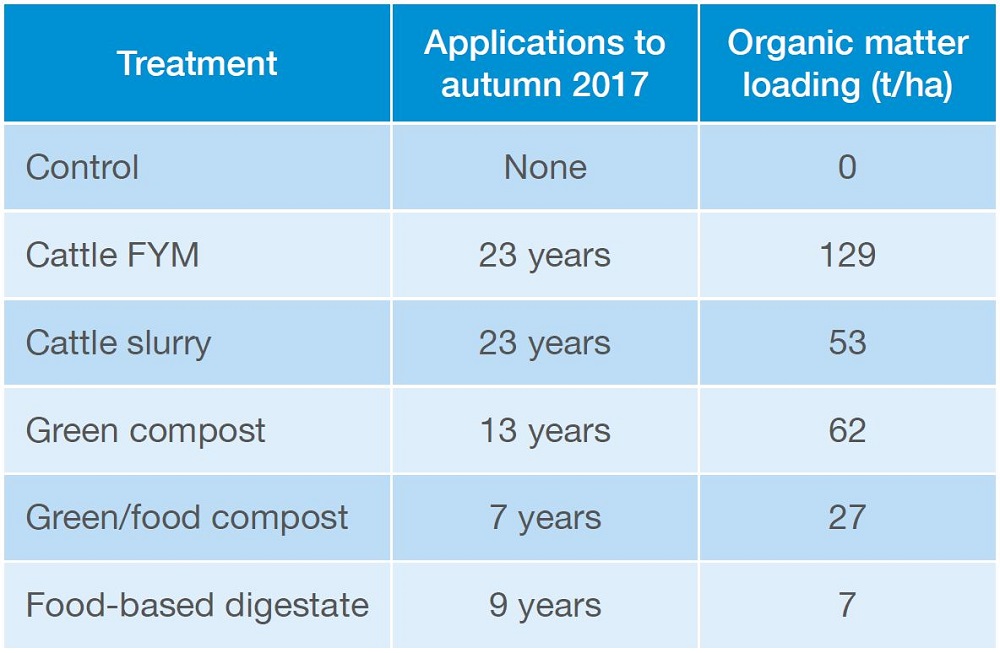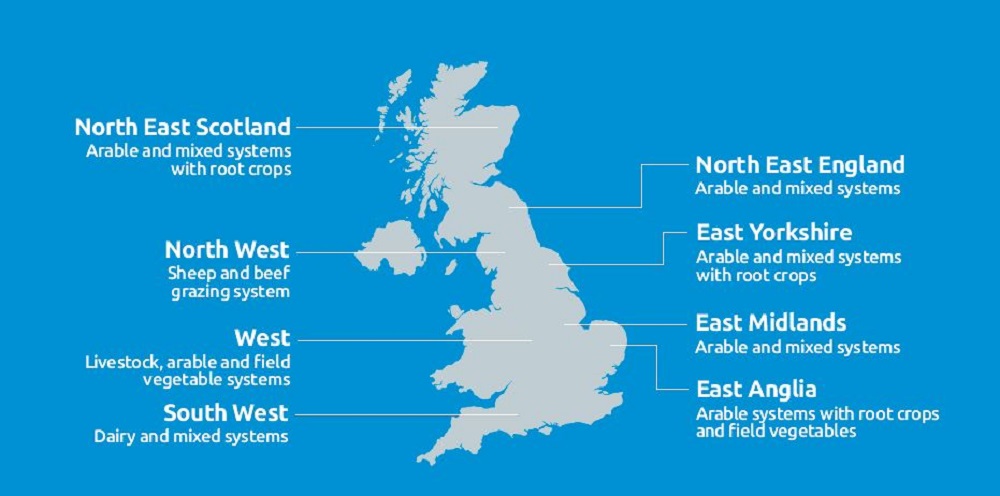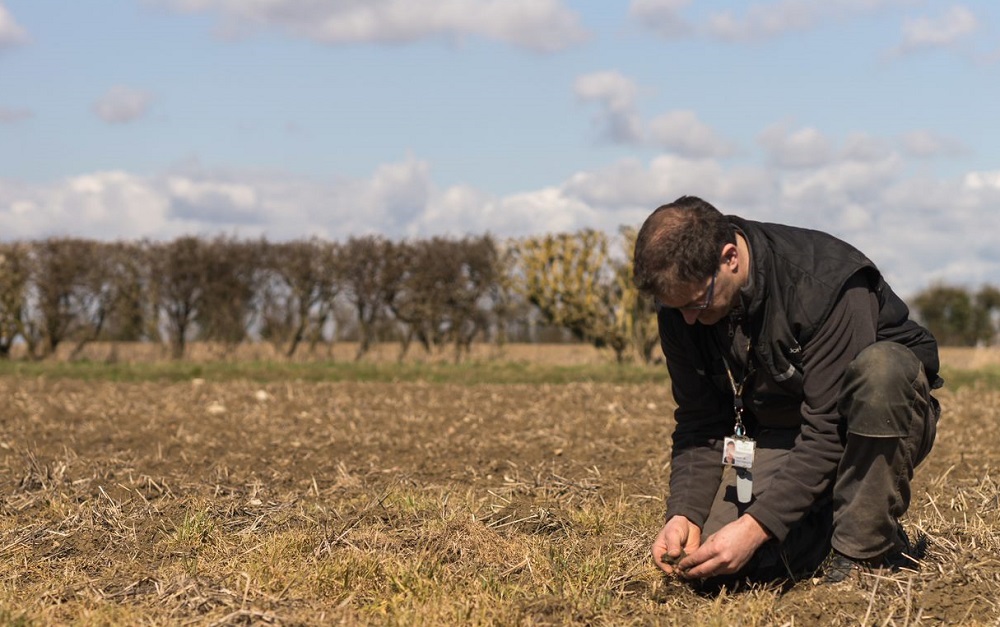Soil health: Let’s get physical (chemical and biological)
Wednesday, 19 June 2019
If you want to know how healthy you are, there are a myriad of tests and tools to help you ‘quantify’ the condition of your body – your blood pressure, your body mass index and your cholesterol level, for example. Now there is a move to develop ways to quantify the health of your soil, too.
In 2016, AHDB and BBRO funded the five-year Soil Biology and Soil Health Partnership. With its focus on soil health, one ambition is to produce a toolkit to assist with its measurement and management.
One of the first tasks was to review what could be measured and how practical it was to measure it. A broad range of indicators (physical, chemical and biological) has been assessed by the research team, including:
- Common indicators: pH, routine nutrients, bulk density and penetrometer resistance
- Less common indicators: visual evaluation of soil structure (VESS), soil organic matter/loss on ignition (LOI), respiration and earthworms
- New indicators: total nitrogen, microbial biomass carbon, potentially mineralisable nitrogen (PMN), DNA measures (e.g. of pathogens), nematodes and microarthropods
With so many soil attributes available for measurement, a simple way to bring the most relevant ones together was considered essential – enter the ‘soil health scorecard’. The team has identified threshold values associated with each attribute. When the results from the various field measurements are entered into the scorecard (currently, an Excel spreadsheet), a traffic-light system flags up whether anything requires investigation (red), monitoring (yellow) or, if things are good, where no action is needed (green).
To test the approach, a network of seven experimental sites has been established. The sites represent a range of soil management histories, soil types, soil organic matter additions, pH levels, drainage statuses/structures, climatic conditions and rotations (including grass leys, cereals, sugar beet and potato production).
A ‘research case study’ (available on the AHDB website) has been developed for one of these sites. Located at Harper Adams University, it is a fascinating and unique long-term experimental site. Established in 1991, on a sandy-loam soil (‘Wick’ soil series), the site provides an extreme test for the prototype scorecard. It has a long history of repeat organic material additions (at recommended rates) in a predominantly arable rotation (cereals and potatoes). In fact, cumulative organic matter inputs range from 0 t/ha to 129 t/ha. Prior to the latest round of funding, the site had received support from a variety of sources: most recently, via the WRAP digestate and compost in agriculture (DC-Agri) field experiment (www.wrap.org.uk/dc-agri).
Five organic material treatments have been applied (Table 1). These include annual applications of cattle farmyard manure (FYM), cattle slurry, green compost, green/food compost and food-based digestate. There is also a control treatment, which has received manufactured fertiliser only. Fertiliser was also applied across treatments to ensure that nutrient supply did not limit crop growth.
Initial measurements of topsoil physical, chemical and biological properties were made in October 2017 and a soil health scorecard was produced.
In terms of soil organic matter (SOM), the thresholds set were based on those considered to be ‘typical’ for the soil type and climate. Unsurprisingly, the control – which received no applications of organic matter – had a relatively low SOM content. The light-textured soils responded well to the application of organic materials, particularly bulky materials, such as FYM and green compost.
Key nutrients were also measured – extractable phosphorus (P), potassium (K) and magnesium (Mg). Thresholds were based on values taken from AHDB Nutrient management guide (RB209). Levels of nutrients were relatively low in the control. Levels were higher across the organic matter treatments. The soils at this site are inherently high in extractable P and management strategies would need to take this into account across all treatments, especially the FYM treatment.
Visual Evaluation of Soil Structure (VESS) scores from the topsoil (top 30 cm) were also good at the site. VESS is a straightforward and quick way to test soil structure in three simple steps – soil removal, soil assessment and soil scoring. The soil quality score produced can help highlight where soil structure needs to be improved. Ideally, each distinct soil layer should be assessed separately and management focused on the worst performing, ‘limiting’ layer. A score of 1 or 2 is good, a score of 3 is moderate and shows the soil requires monitoring, and a score of 4 and 5 indicates that management action is required.
Further information on VESS can be found at: www.sruc.ac.uk/media/xbrfn4x3/vess-colour-chart.pdf
Counts of the number of earthworms (total number of adults and juveniles) showed that all treatments were associated with an active population – more than eight per pit is an ‘active’ population for arable or ley/arable soils.
The application of bulky organic materials was also shown to improve topsoil bulk density (at 5–10 cm depth), from 1.4 g/cm3 on the control treatment to 1.3 g/cm3, where either FYM or green compost had been applied.
The plan is to repeat the sampling process for a further three years of arable cropping (winter wheat, potatoes and spring cereal). The impact of additional organic material applications on a wider range of soil quality indicators will also be investigated.
Other long-term sites in the network are also using the approach to determine the effect of crop rotation, pH, tillage and drainage status on soil health.
The main strength of the scorecard is that it breaks down the challenge of improving soil health into manageable pieces. It can focus attention and guide management interventions to improve the overall health status of the soil.
During the remainder of the partnership, the soil health scorecard will be refined and tested across the experimental sites, and in consultation with the project’s eight farmer research innovation groups.
A set of indicators, which can be used to measure soil health in the field directly or indirectly (i.e. though sending samples away for analysis), will be developed by the project. Critically, the research will also improve understanding of the relationship between each component of soil health and crop yields.
One of the most exciting areas of activity is the development of more robust indicators, benchmarks and thresholds for biological properties. The 2018 annual report includes details of innovative developments in molecular biology that are yielding ways to measure the soil biological community, including the presence and distribution of soilborne pathogens.
Information on the project can be accessed via ahdb.org.uk/greatsoils
Strategic approach to soil health
Rob Fox manages Squab Hall farm, based just outside Leamington Spa. He farms 400 ha of owned and rented land, with a rotation of winter wheat, winter barley, winter oilseed rape, spring beans and spring barley. The business is highly diversified, with a large storage enterprise, as well as machinery and labour sharing with three arable farms. Key challenges on the farm include black-grass management and improving soil quality.
Last year, Squab Hall became the first Strategic Cereal Farm West for AHDB Cereals & Oilseeds. As a host of a Strategic Cereal Farm, Rob works to integrate research and practice. As part of efforts to measure the effects of new ways of working, a series of baseline assessments have been conducted on the farm. An initial step in the six-year programme, soil scientists have captured the variability in soil properties and the condition of each soil type across 11 fields. As part of this process, the soil health scorecard approach will be used.
Samples are taken, whenever possible, when soils are moist and warm, with the optimum timing being late autumn. In addition to the attributes listed in Table 2, further indicators are also being measured, such as potato cyst nematodes (PCN), free-living nematodes (FLN), bulk density and soil strength.
These routine measurements of soil health will help gauge the impact of various treatments applied at Rob’s farm.
Emily Pope, AHDB Knowledge Transfer Manager, said: “We’ve got exciting plans at Squab Hall. The soil health baseline assessments will underpin a great deal of activity at this Warwickshire farm.
“For example, we plan to look at rooting potential of wheat, spring barley and oilseed rape crops. We want to see how soil properties and cultivation scenarios influence rooting.”
‘Shovelomics’ will also be used. This involves digging up crop with the top 20–30 cm of soil. The soil is then washed off, revealing the roots for assessment. Root angle, seminal root number, nodal root number, branching density and root biomass are all measured. Root angle is associated with increased root biomass in deeper soil layers, and root number or branching density can be indicative of improved establishment.
The vision of Strategic Cereal Farm West is to test research outputs independently in an open, honest and transparent way.
Table 1. Organic material treatments applied at the Harper Adams University trial site

 and control (right) treatments.JPG)
VESS assessment of the long-term farmyard manure (left) and control (right) treatments
 v zero tillage (R).JPG)
These earthworm populations were sampled from medium soils that received regular organic matter inputs (manures and crop residues). The effect of tillage system – conventional (left) and zero till (right) – on the number of large deep-burrowing earthworm species is clear to see

Eight farmer research innovation groups have been established across the UK to review the soil health scorecard approach

AHDB strategic farmer Rob Fox wants to improve soil health on his Warwickshire farm. Rob also hosted a Monitor Farm from 2014 to 2017

